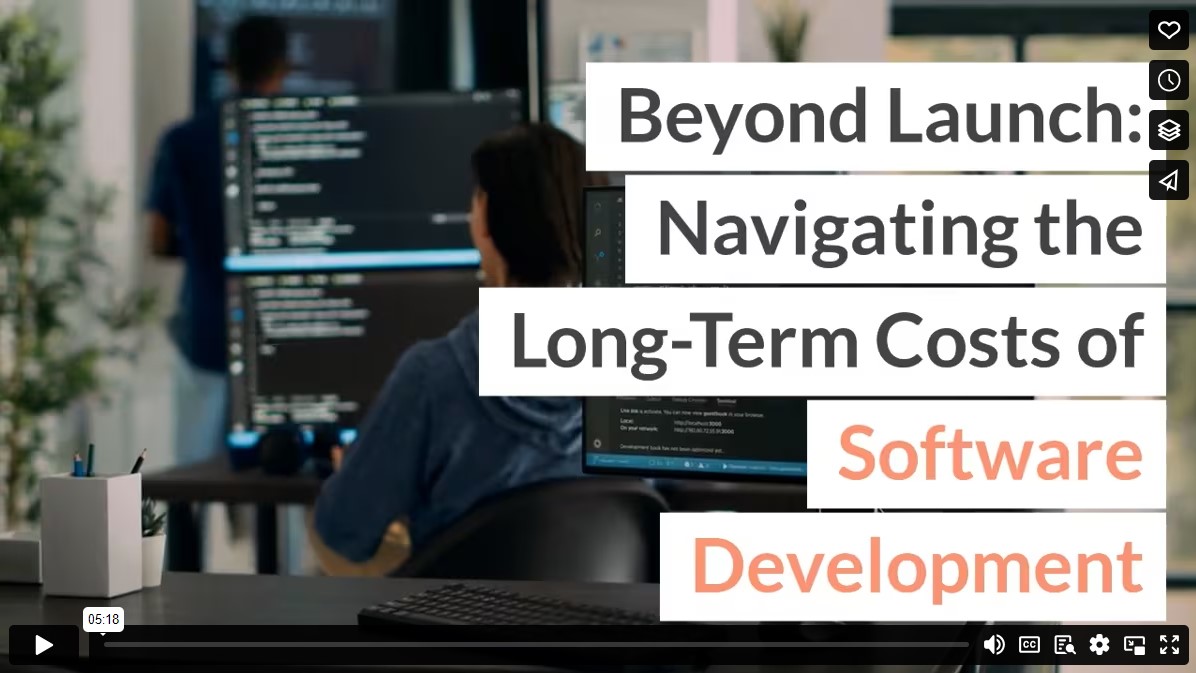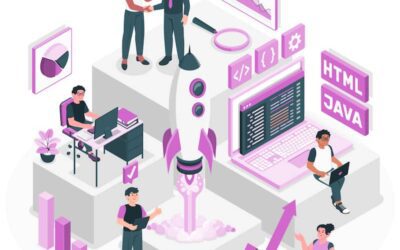When an application launches successfully, it’s a huge sigh of relief for all parties involved. After all, your months (or even years) of hard work have finally come to fruition.
And while it’s a major victory, the work is far from over. In fact, the work really never ends.
You can’t build a house and expect it to be self-sustaining forever. You need to pay for the electricity and water you use. You’ll need to do maintenance and repairs as time goes by. You’ll probably want a remodel at some point when it starts to feel too dingy or out of date.
The same concept applies to newly-launched software. In addition to the costs of keeping it running on a daily basis (like hosting), you’ll need to be prepared for costs related to maintenance, updates, and upgrades, which — if the app is successful — are certainly in your future.
Today, we’ll look at some of the ongoing and long-term costs of software development. This way, you can be prepared for what’s needed once your masterpiece finally hits the market.
A critical cost: Keeping your users happy
At the end of the day, if you can’t keep your users around and satisfied, you won’t have an app to speak of. Apart from maintenance and updates (which we’ll get into later), this will hands-down be one of your biggest long-term costs.
It will also be one of your most complex and evolving costs. That’s because there’s no single way to go about user satisfaction. It depends on all kinds of factors, like the nature and scope of the app itself, the number of features/functionality level at your initial launch, the needs and behaviors of your users, and the resources you have (just to name a few).
For instance, we recently partnered with a law firm to enhance their application for helping clients claim compensation for workplace accidents. By adding intuitive features like guided claim forms, live chat for instant support, and integrations with third-party legal tools, we improved both the client experience and case success rates—ultimately strengthening the firm’s long-term relationship with their users.
If you want to gain clients, then retain them and earn their loyalty, you’ll need a finger on the pulse of what they want and need. A few of the top investments you might need to make include:
- Changing certain features, like an interface redesign, integration of an additional payment gateway, an enhanced search algorithm, multi-platform compatibility, or a streamlined checkout process
- Adding new features, like live chat support, integration with third-party APIs, or gamification features like badges and leaderboards
- Providing users with more information and ongoing education on how to best use the product, like user documentation, how-to’s and tutorials, guides, or enhanced customer support
And how exactly will you collect this user feedback? Well, that’s another cost in itself. You might want to do things like manual outreach, one-on-one or group interviews, focus groups, or surveys. All of these options require moolah to plan, execute, and analyze.
Code maintenance, upgrades, and modernization
It’s likely that you’ll have some maintenance work like kinks and bugs to iron out here and there — that’s a given. But you’ll also want to allocate some time and resources to maintaining a modern and stable codebase.
Generally speaking, you’ll want to do your technical due diligence and keep up-to-date with new technologies, like languages, frameworks, front end tech, development tools, and security tools and measures. If you go too long without updating your tech stack, you’ll likely find yourself with a handful of bugs and issues that you could have otherwise prevented.
Plus, you run the risk of falling behind your competition. Staying on top of new features, improvements, and innovations in your industry and niche can maximize your app’s performance and keep your users on your team. If you fall too far behind, you’ll have a problem-riddled, stale codebase and a tough time catching up.
Refactoring and rewriting
Even if you put your best efforts into maintenance, upgrades, and modernization, it’s still common for your code to become inefficient over time. You may find yourself needing to integrate old code with new frameworks or do a massive overhaul in certain areas.
In these cases, you might consider refactoring or rewriting, two common approaches to larger code changes. With refactoring, you’re better able to make smaller, incremental changes while preserving as much of the original code as possible. Rewriting, as you can guess, involves throwing your code in the trash and starting from scratch.
Generally speaking, I strongly recommend trying to avoid rewriting outside of a few main scenarios: the old code is obsolete or unsalvageable, you’re doing a complete redesign, or you want a large-scale functionality revamp that outweighs your existing functionality. I wrote a separate article on this here.
Retaining and retraining the software developers in your company
From a software company’s perspective, it can be tricky to keep the team dedicated to an aging product. This is because there are many developers who are far more interested in working on something that’s new than they are on things like maintenance.
This means that the company may need to invest in retraining their team or even hiring new developers for maintenance-related projects. In addition to the hiring process being tedious and time-consuming, those new hires will also then need training… it’s a vicious cycle.
And when you think about it, the costs of losing team members isn’t just monetary. When experienced developers move on, it’s also a loss of institutional knowledge. The level of collective team expertise can take a blow when these team members decide to move on.
To retain those experienced team members, be prepared to increase compensation or benefits. It’s often worth it.
Stay on top of the creeping costs of the software
For many developers and business owners, what seemed like a swift victory can quickly turn into a headache and a major budget drain. If you’re not careful about planning for long-term development work and attendant costs, your software could take a major hit.
You could fall victim to anything from reputation damage from a security breach, to unresolved bugs that cause you to lose customers, to worse.
On the other hand, you’ll be in a position of success if you’re actively monitoring and tracking software upkeep, balancing it against your budget, and prioritizing the most important upgrades for keeping your products on the front line.
Video





